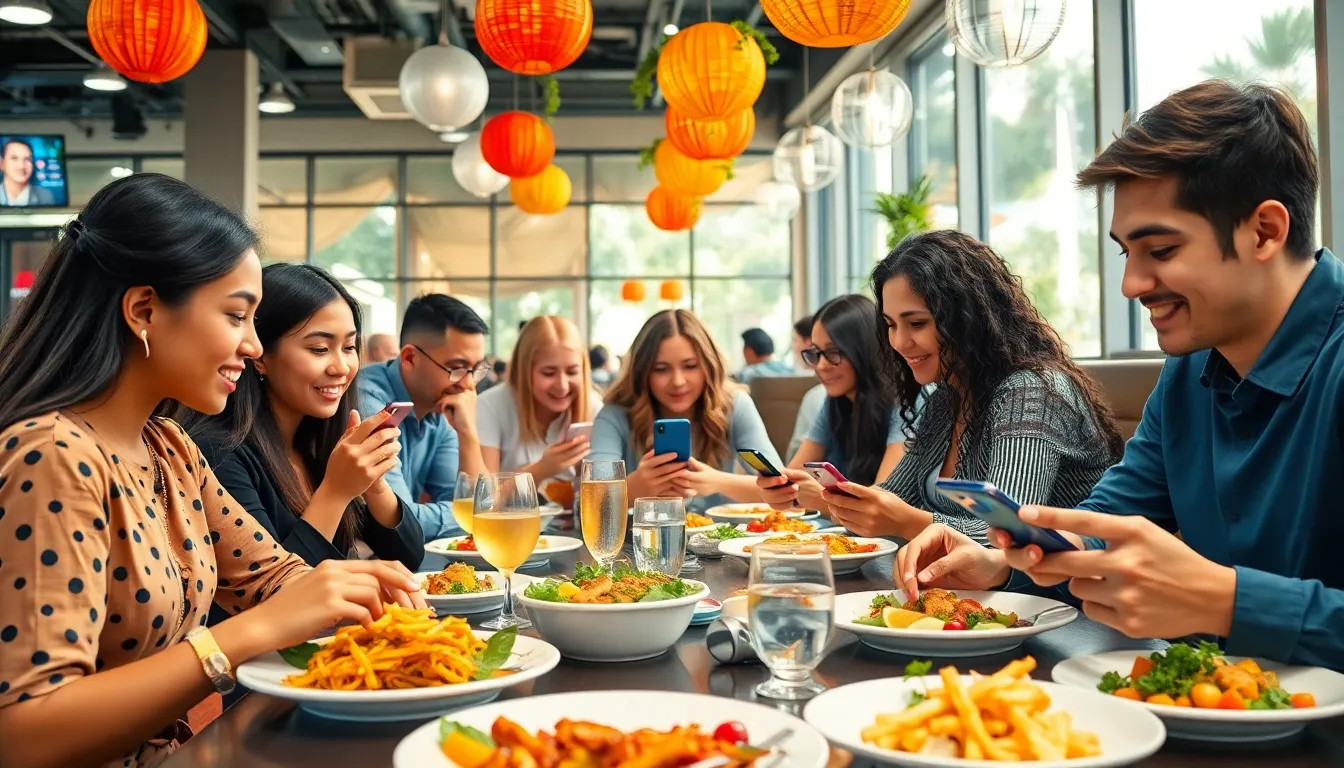In today’s digital age, a restaurant’s social media presence can be the difference between a bustling dining room and crickets chirping in an empty space. With diners scrolling through their feeds like it’s a buffet, it’s crucial for eateries to serve up a mouthwatering social media strategy that leaves a lasting impression.
Picture this: a perfectly crafted post showcasing a drool-worthy dish that makes followers wish they could teleport to your restaurant. But it’s not just about pretty pictures; it’s about creating a buzz, engaging with customers, and turning casual scrollers into loyal patrons. If a restaurant wants to spice things up and keep the conversation flowing, it’s time to dig into the essential ingredients of a winning social media strategy. After all, who wouldn’t want to turn their online followers into their biggest fans?
Restaurant Social Media Strategy
An effective social media strategy plays a crucial role in enhancing a restaurant’s visibility and reputation. Engaging directly with diners can foster a loyal community that actively supports the business.
Importance of Social Media for Restaurants
Social media platforms provide restaurants a direct line to their audience. With 73% of marketers believing that their efforts through social media marketing have been “somewhat effective” or “very effective,” the impact of these channels is clear. Restaurants can showcase their signature dishes and unique experiences to attract potential customers. Additionally, increased visibility leads to higher brand awareness. Through consistent and engaging content, restaurants cultivate customer relationships that encourage repeat visits and word-of-mouth referrals.
Key Components of an Effective Strategy
Engaging content forms the backbone of a successful restaurant social media strategy. High-quality images and videos that highlight dishes and ambiance effectively draw attention. Regular posting schedules help maintain consistency, keeping the audience engaged. Restaurants should also respond to comments and messages, fostering communication and building rapport. Moreover, utilizing analytics tools allows restaurants to track performance, adjust strategies, and identify successful content types. Campaigns that encourage user-generated content often enhance community involvement and authenticity.
Choosing the Right Platforms

Selecting appropriate social media platforms is crucial for a successful restaurant strategy. Different platforms cater to specific demographics and user behaviors.
Analyzing Your Target Audience
Understanding the target audience shapes the choice of social media platforms. He or she should identify age groups, interests, and dining preferences. Gathering insights from existing customers can guide platform selection. For instance, younger audiences engage more on platforms like Instagram and TikTok. In contrast, older demographics may prefer Facebook to read reviews and gather information. Conduct surveys or analyze follower data to identify where the audience is most active. Knowledge of these details helps tailor the restaurant’s content effectively, ensuring that messages resonate with potential diners.
Popular Social Media Platforms for Restaurants
Restaurants benefit from utilizing various social media platforms tailored to their goals. Facebook remains dominant due to its extensive reach and networking capabilities; it allows sharing events, promotions, and engaging with customers. Instagram excels in visual appeal, making it ideal for showcasing dishes and restaurant ambiance. This platform often drives engagement through stunning imagery and stories. TikTok emerges as a rapidly growing platform, particularly for generating trends and viral content, especially among younger audiences. Twitter facilitates real-time interaction and quick updates, making it suitable for announcements. Each platform provides unique advantages, enabling restaurants to connect with diverse audience segments and enhance brand visibility.
Content Creation and Curation
Content creation and curation are vital components of an effective restaurant social media strategy. They enhance engagement and foster community.
Visual Content: Engaging Audiences
High-quality visuals capture attention and convey a restaurant’s brand identity. Stunning images of dishes, professional videos showcasing cooking techniques, and behind-the-scenes content draw followers in. Engaging content varies from daily specials to event highlights, providing a glimpse into the dining experience. Regularly posting vibrant images on platforms like Instagram can spark interest and promote sharing, leading to increased reach. Showcasing the ambiance through photos can also create a connection, making potential diners more likely to visit.
User-Generated Content: Building Community
User-generated content fosters community and brand loyalty. Encouraging diners to share their experiences creates an authentic representation of the restaurant. Restaurants can initiate photo contests or dedicate specific hashtags to facilitate participation. Sharing customers’ posts not only promotes engagement but also strengthens relationships, as diners feel appreciated and recognized. Regularly featuring user content on official channels enhances credibility and encourages ongoing conversation around the brand. When diners see others enjoying meals, they become more likely to frequent the establishment, forming a supportive community.
Measuring Success
Measuring success in a restaurant’s social media strategy requires objective assessment of various metrics. Analyzing performance provides insights into what works and what needs adjustment.
Key Performance Indicators (KPIs) to Track
Track engagement metrics such as likes, shares, and comments. Monitor follower growth to assess audience reach and interest. Analyze reach and impressions to gauge visibility across platforms. Conversion rates highlight the effectiveness of campaigns, particularly those aimed at reservations or promotions. Customer feedback through reviews or direct messages offers qualitative insights. Regularly evaluating these KPIs enables restaurants to refine their strategies and foster deeper connections with their audience.
Tools for Social Media Analytics
Utilize platforms like Hootsuite or Sprout Social for comprehensive analytics. These tools streamline performance monitoring across multiple social media channels. Google Analytics delivers insights into website traffic from social media sources. Facebook Insights provides user interaction data specific to posts and pages. Instagram Insights reveals engagement rates and audience demographics. Consistently leveraging these analytics tools allows restaurants to make informed decisions that enhance social media presence and engagement.
Conclusion
A robust social media strategy is essential for restaurants looking to thrive in a competitive market. By focusing on engaging content and fostering community connections, restaurants can transform casual followers into loyal patrons. Choosing the right platforms and understanding the target audience ensures that marketing efforts resonate effectively.
Measuring success through key performance indicators helps refine strategies and enhance engagement. With the right approach, restaurants can not only increase visibility but also create a vibrant online presence that drives repeat visits and strengthens customer relationships. Embracing these social media tactics can lead to lasting success in the ever-evolving dining landscape.

